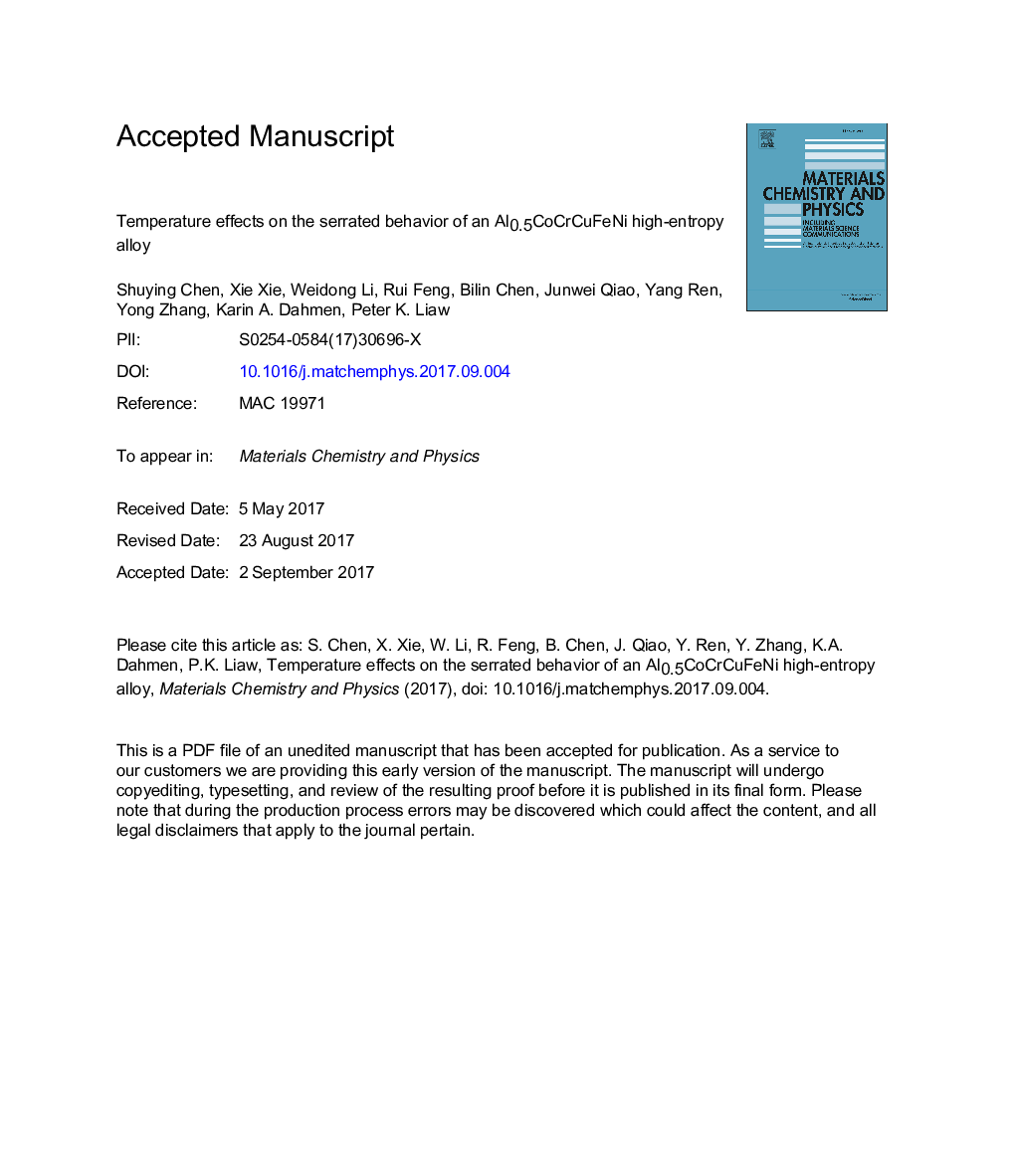| Article ID | Journal | Published Year | Pages | File Type |
|---|---|---|---|---|
| 7921846 | Materials Chemistry and Physics | 2018 | 36 Pages |
Abstract
Compression experiments of the Al0.5CoCrCuFeNi high-entropy alloy (HEA) under displacement control were conducted at different temperatures ranging from 673Â K to 873Â K with a strain rate of 5Â ÃÂ 10â5/s to study its serration behavior. Samples after compression tests were investigated, using the synchrontron-diffraction technique and transmission-electron microscopy. By comparing the stress-strain curves at different temperatures, two opposite directions of serrations were observed, named the upward serration appearing at 573Â K and 673Â K and the downward serration at 773Â K and 873Â K. The different directions of serrations were discussed in terms of not only the relationships among the stress vs. strain, stress vs. time, and strain vs. time, but also the interactions among dislocations, atoms, and nanoparticles. Finally, the temperature effect on the flow serration is discussed by referring to a theoretical framework for the initiation of the serrated flow. Beyond a critical high temperature, the initiation of the serrated flow becomes swiftly difficult, and ultimately the plastic flow in the full deformation range turns smooth. The theoretical prediction of the normal behavior is essentially in qualitative agreement with the experimental observation in the present work, i.e., the critical strain to initiate the serration decreases with increasing the temperature.
Keywords
Related Topics
Physical Sciences and Engineering
Materials Science
Electronic, Optical and Magnetic Materials
Authors
Shuying Chen, Xie Xie, Weidong Li, Rui Feng, Bilin Chen, Junwei Qiao, Yang Ren, Yong Zhang, Karin A. Dahmen, Peter K. Liaw,
